The Art of Soothing Your Baby After a Bath: A Parent's Guide
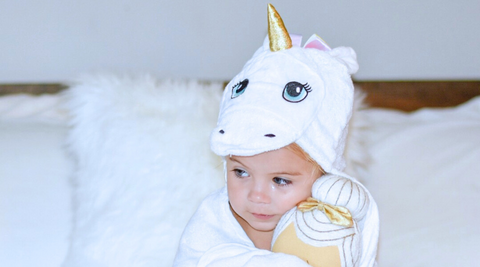
Bathing your baby can be a delightful experience for both you and your little one. The warm water and gentle cleansing can make your baby feel relaxed and refreshed.
However, after the bath, some babies become fussy or agitated, making it a challenging task for parents to calm them down.
In this article, we'll explore some effective methods to soothe your baby after a bath, turning this post-bath period into a pleasant and bonding experience for both you and your baby.
Set the Stage for Success
Before we delve into the specifics of calming your baby after a bath, let's ensure that you're creating a safe and comfortable environment for the bathing process. Here are some essential tips for setting the stage for success.
a. Maintain the Right Water Temperature
The first rule of thumb is to ensure that the water temperature is ideal. Babies are sensitive to changes in temperature, so make sure the water is comfortably warm, around 100°F (37.8°C).
b. Gather Your Supplies
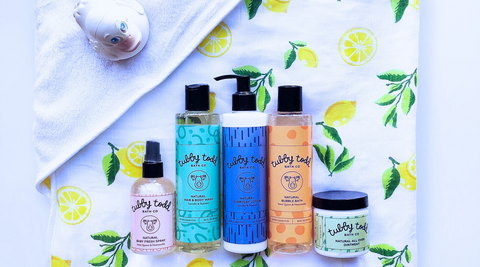
Before you begin, have everything you need within arm's reach. This includes baby soap, a soft towel, a clean diaper, and fresh baby clothes. This preparation will make the post-bath process smoother.
c. Be Mindful of Timing
Bathing your baby at the right time can make a difference. Some babies enjoy a bath before bedtime as it can be a soothing part of their nighttime routine. Others may prefer a bath earlier in the day to wake them up and provide stimulation.
Wrap Your Baby in Love
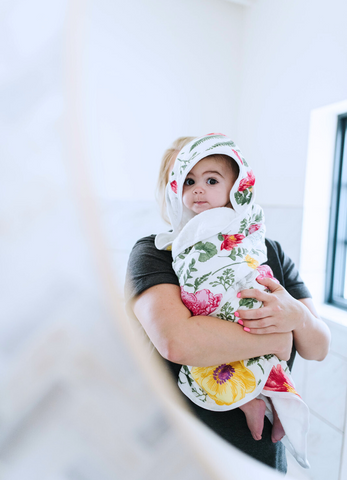
Once you've completed the bath and gently lifted your baby out of the water, it's crucial to envelop them in love and warmth.
a. Use a Soft Towel
Pat your baby dry using a soft and super-absorbent towel. Make sure the towel is warmed or at room temperature to avoid any sudden temperature shocks.
Kloud Bambu has the softest towels you would ever need for your baby. It is made of bamboo fabric that's know for it's softness and durability. What's more, it's safe to babies with sensitive skin.
b. Be Gentle
Be very gentle as you dry your baby, paying special attention to creases and folds. This can be a bonding moment as you softly talk to your baby and maintain eye contact.
c. Skin-to-Skin Contact
Skin-to-skin contact with your baby can work wonders. Hold your baby close to your chest, allowing them to feel your warmth and hear your heartbeat. This not only keeps them warm but also provides comfort and reassurance.
Gentle Post-Bath Massage
A gentle massage can help your baby relax after a bath. Make sure to use a baby-friendly moisturizing lotion or oil. Here are some tips for an effective post-bath massage.
a. Use Gentle Strokes
Your touch should be soft and tender. Use gentle, slow strokes to massage your baby's arms, legs, back, and tummy. Ensure your hands are warm to avoid any sudden shocks.
b. Pay Attention to Cues
Observe your baby's reactions during the massage. If your baby seems uncomfortable or fussy, adjust your technique or try something else.
c. Bonding Time
Massaging your baby is not only about physical relaxation but also about emotional bonding. Maintain eye contact and talk to your baby soothingly.
Create a Calm and Cozy Atmosphere
The environment in which you dry and dress your baby plays a significant role in calming them down. Here's how you can create a calm and cozy atmosphere:
a. Dim the Lights
Soft, dim lighting can help create a peaceful ambiance. Harsh, bright lights may startle your baby after a relaxing bath.
b. Soft Music
Playing soothing music in the background can also contribute to a tranquil atmosphere. Choose gentle lullabies or instrumental music to set the mood.
c. Eliminate Drafts
Babies are sensitive to drafts and temperature changes. Make sure the room is comfortably warm and draft-free, especially in cooler months.
Swaddle or Dress Comfortably
After the massage and in your calming atmosphere, it's time to swaddle or dress your baby. The choice between swaddling or dressing depends on your baby's preference and the room temperature.
a. Swaddle
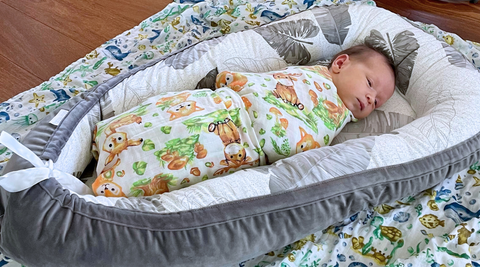
Swaddling is the practice of enveloping your infant in a blanket. Some babies find comfort in being swaddled, as it replicates the feeling of being in the womb. Make sure not to wrap too tightly and leave enough room for your baby's hips to move.
Kloud Bambu Muslin Swaddle Blankets are perfect to keep your baby snug and warm without heating up no matter the season. Choose from our range of swaddle blankets and wrap your baby comfortably anywhere, anytime.
b. Dress Comfortably
If your baby isn't a fan of swaddling, dress them in comfortable, loose-fitting clothing. Choose breathable materials like cotton to ensure they don't get too hot or too cold.
Offer a Feeding
For many babies, feeding is a natural way to calm down and feel secure. Offering a breastfeed or a bottle after the bath can be a soothing experience. The act of nursing not only provides nourishment but also offers comfort and closeness.
a. Time It Right
If you choose to feed your baby after the bath, make sure it's a well-timed feeding. A full tummy can make your baby feel more content and ready for sleep.
b. Burp Your Baby
If you're bottle-feeding, ensure that your baby is burped properly after the feed to prevent discomfort from gas.
Comforting Techniques
Sometimes, babies may still be fussy or restless despite your best efforts. In such cases, you can try some additional comforting techniques:
a. Pacifiers
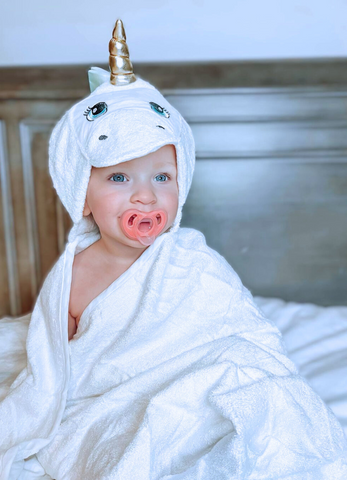
Sucking on a pacifier can provide comfort for many babies. It can help soothe and calm your baby.
b. Rocking
Gently rocking your baby in your arms or in a rocker can be soothing. The motion mimics the movement your baby experienced in the womb.
c. White Noise
Some babies are comforted by white noise, such as the sound of a fan, a gentle waterfall, or a specialized white noise machine.
d. Babywearing
Baby carriers or slings allow you to keep your baby close while you go about your daily activities. The close contact and gentle rocking motion can be very calming.
Stay Calm and Patient
The most important aspect of calming your baby after a bath is to remain calm and patient. Babies can sense your energy and emotions. If you're stressed or anxious, it can transfer to your baby.
a. Maintain a Calm Demeanor
Speak softly and soothingly to your baby. Your calm and reassuring words can help ease their distress.
b. Be Patient
Understand that not all babies will respond to the same calming techniques. To determine what works best for your child, you may need to experiment a bit.
Conclusion

Calming your baby after a bath can be a delightful and bonding experience when done right.
By setting the stage for a successful bath, offering love and warmth, giving a gentle massage, creating a calming atmosphere, dressing or swaddling your baby comfortably, and using various comforting techniques, you can help your baby relax and prepare for a peaceful sleep.
Remember that every baby is unique, so be patient and adaptable in your approach. With time and practice, you'll become a pro at soothing your baby after a bath, ensuring that both you and your little one cherish this special time together.
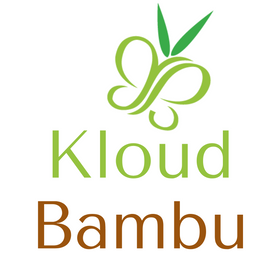
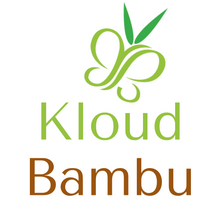



Leave a comment